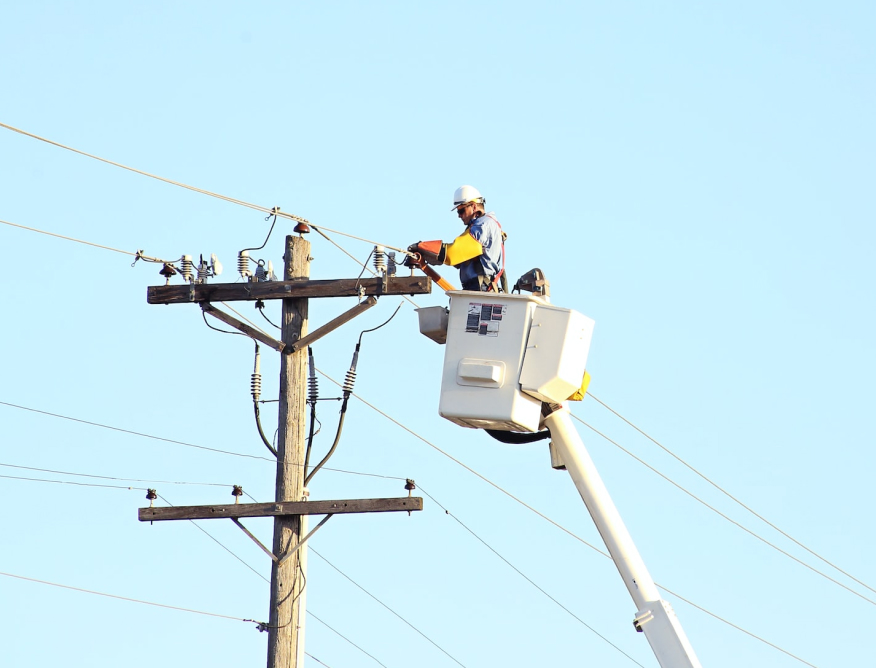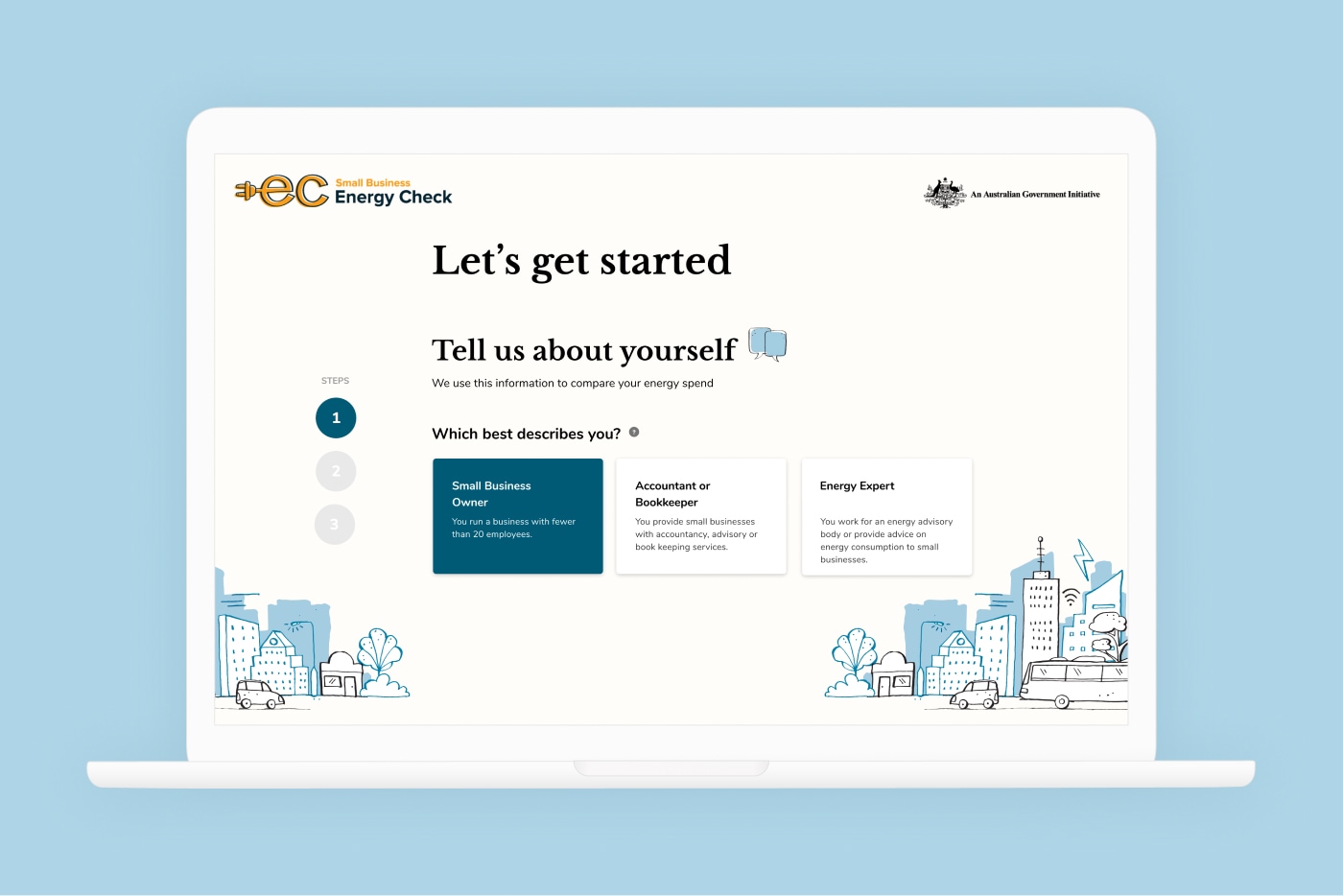Department of Industry, Science and Resources
Assessing the risks to Australia’s energy security, now and in the future.
We facilitated a series of national workshops with industry and government leaders for the Department of Industry, Science and Resources (DISR) to deliver a better understanding of emerging risks to Australia’s energy security.
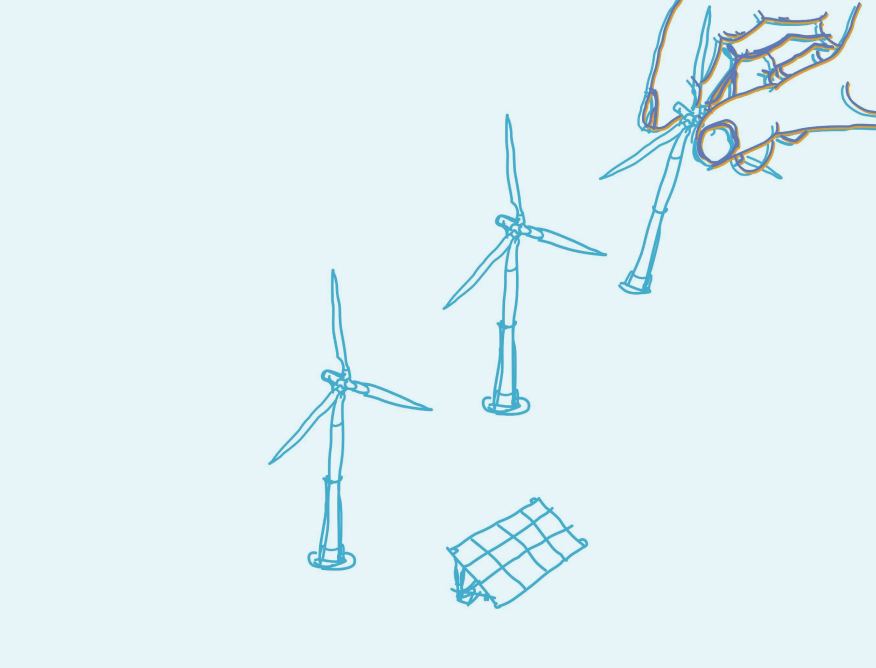
Outcomes
- A new framework to understand Australia’s energy security risk that situates risks in emerging strategic and geopolitical context
- Clear outcomes via six online workshops with 51 senior energy sector stakeholders from across Australia
- Application of best practice strategic design methods such as futures thinking and systems mapping to chart relationships between risks
- 35 emerging risks to Australia’s energy security documented, along with their potential mitigations
Services
- Research and insights
- Policy Design
- Systems mapping
- Strategic design
- Journey mapping
Understanding energy security at a time of unprecedented change
The Australian Energy Security team within DISR is responsible for producing Australia’s National Energy Security Assessments (NESA). These reports ensure that government energy policy aligns with the best interests of Australia by providing risk context for energy sector infrastructure, investment and market factors.
To inform its next NESA, DISR wanted to hear from a wide range of energy sector stakeholders. They wanted to know how these stakeholders understood and prioritised the risks they saw to Australia’s energy security, and to gain alignment and consensus on which risks weren’t being given sufficient attention.
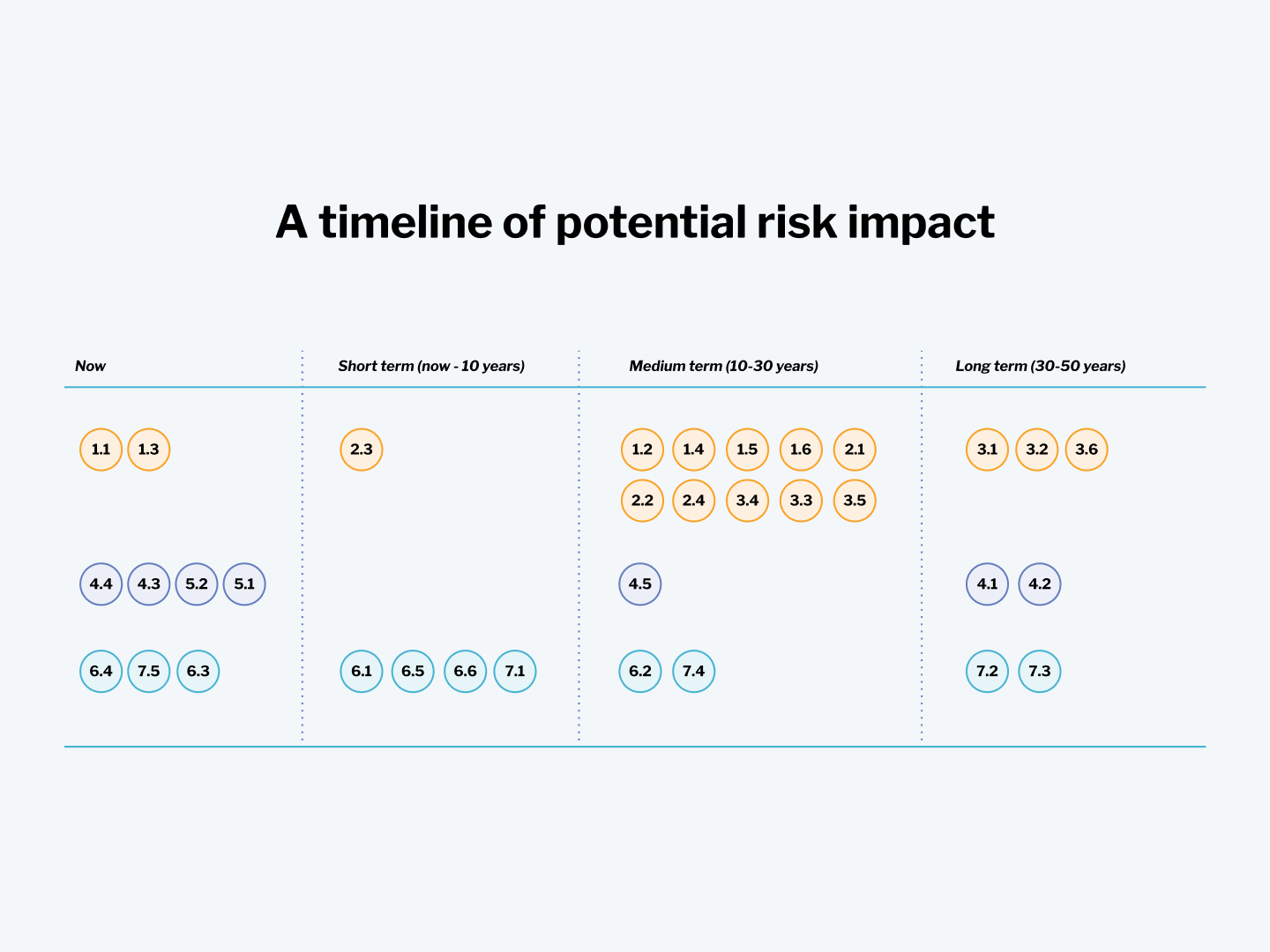
We identified and mapped risks to the energy sector across four horizons: Now, Short term, Medium term and Long term.
Documenting novel risks to energy security
We engaged with 51 participants, including Departmental senior executives and senior industry stakeholders, across six online workshops. Participants had both urban and rural focuses, and included energy sector regulators, academics, generation and transmission experts, consumer advocates, and retailers.
Our workshops prompted rich discussion of specific technical or policy issues affecting aspects of energy system security, and expanded to much broader discussions of the future of Australian society and the role of climate change and geopolitics. Our focus was on risks that were novel, undocumented, or not easy to capture via quantitative research.
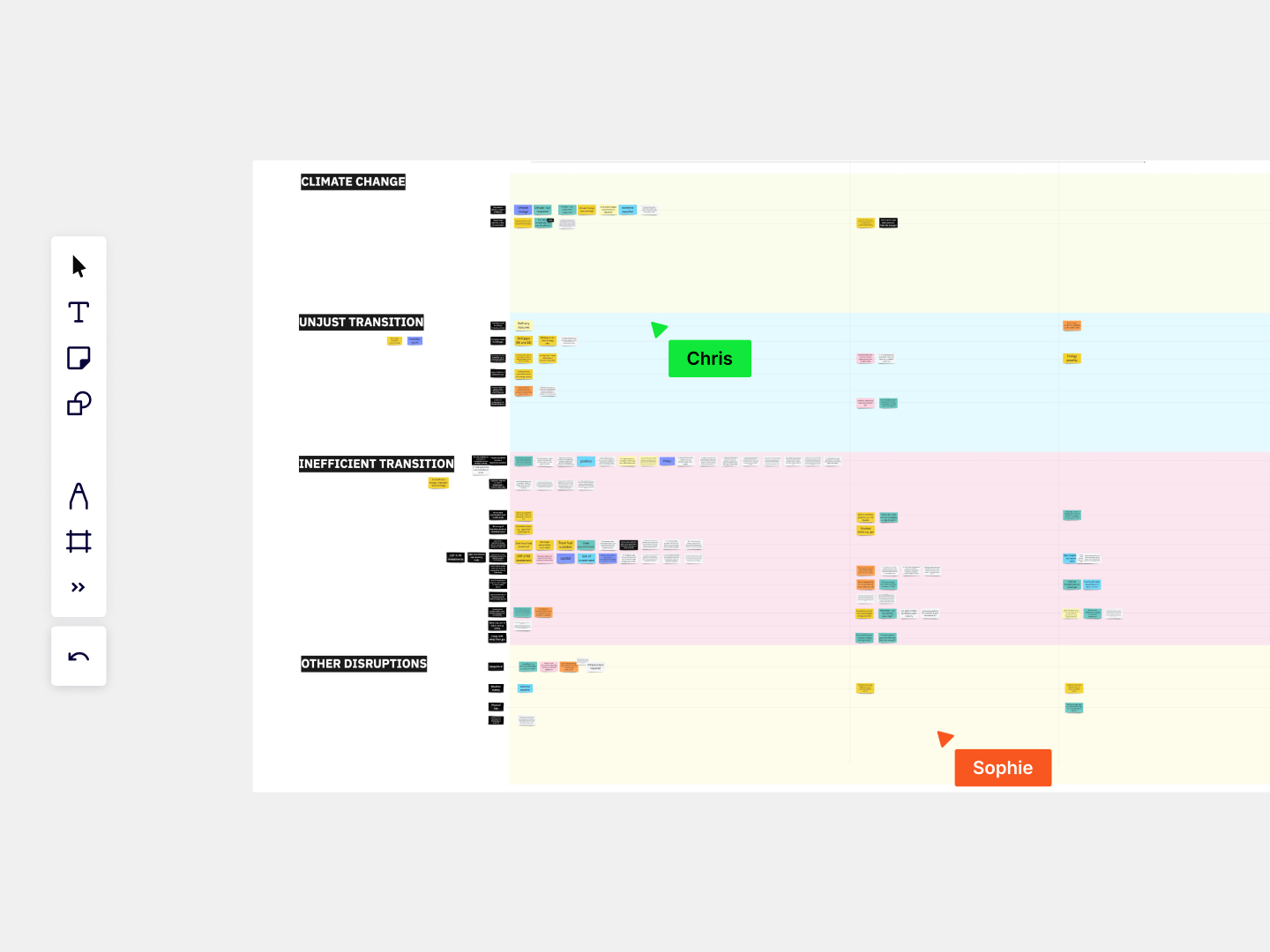
We ran hybrid workshops with complex groups of stakeholders, mapping specific technical and policy issues.
A new framework for understanding energy security in Australia
Participants shared varied and nuanced perspectives on the current system and the challenges ahead. We asked them to respond to a range of existing definitions for energy security. Together, participants developed a new framework for understanding energy security that reflects and balances the views of the workshop stakeholders, and expands on the definition for energy security captured last updated in the 2011 NESA.
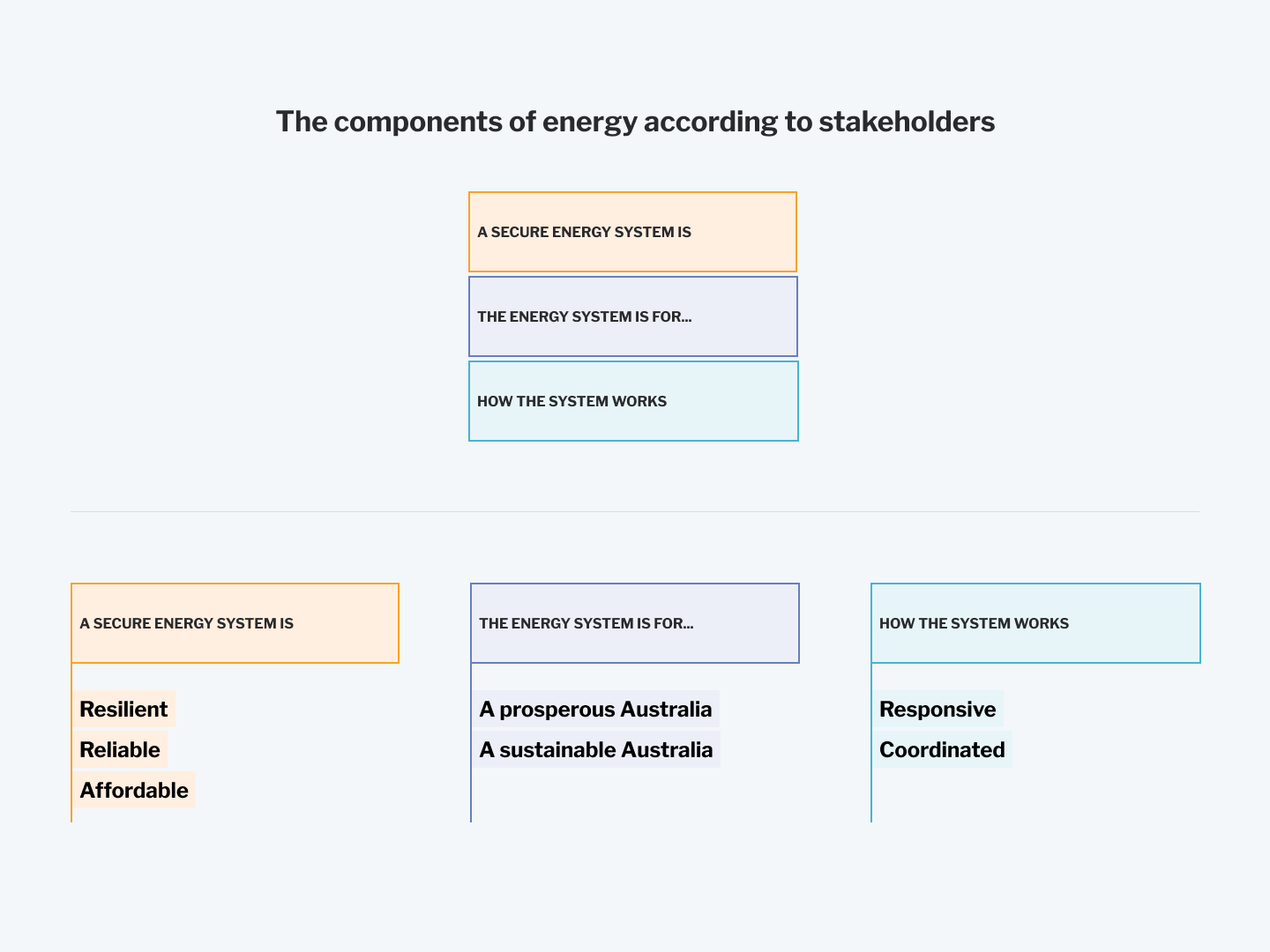
We produced a new framework for understanding energy security, covering What the Energy Systen is, Who is it for, and How it works.
Finding common ground in a complex environment
We used our human-centred design approach to foster opportunities for participants to share detailed and unfiltered perspectives, allowing them to go beyond surface-level risks. By responding to carefully-designed prompts—including energy futures scenarios and causal mapping—participants produced new insights on areas with potential high impact or novel risks.
Our facilitation created a safe environment for the diversity of participants to express their views fully and find alignment. The probable energy futures we asked them to explore—including a likely transition to net-zero and that our energy system becoming more electrified—established a tangible strategic landscape in which we could test emergent risk.
Finding new links between risks
We were able to show novel relationships between risks in our analysis by building a future-focused framework that considers causal factors and the relationship between seemingly standalone risks. We also identified risks with flow-on effects that increase the likelihood of potentially critical energy security impacts.
By designing a single, future-focused process that brought together organisationally disparate groups, and supporting them to apply their own sector experience to go deep on novel risk mapping, we created a shared understanding and new insight of one of the biggest issues facing Australia.
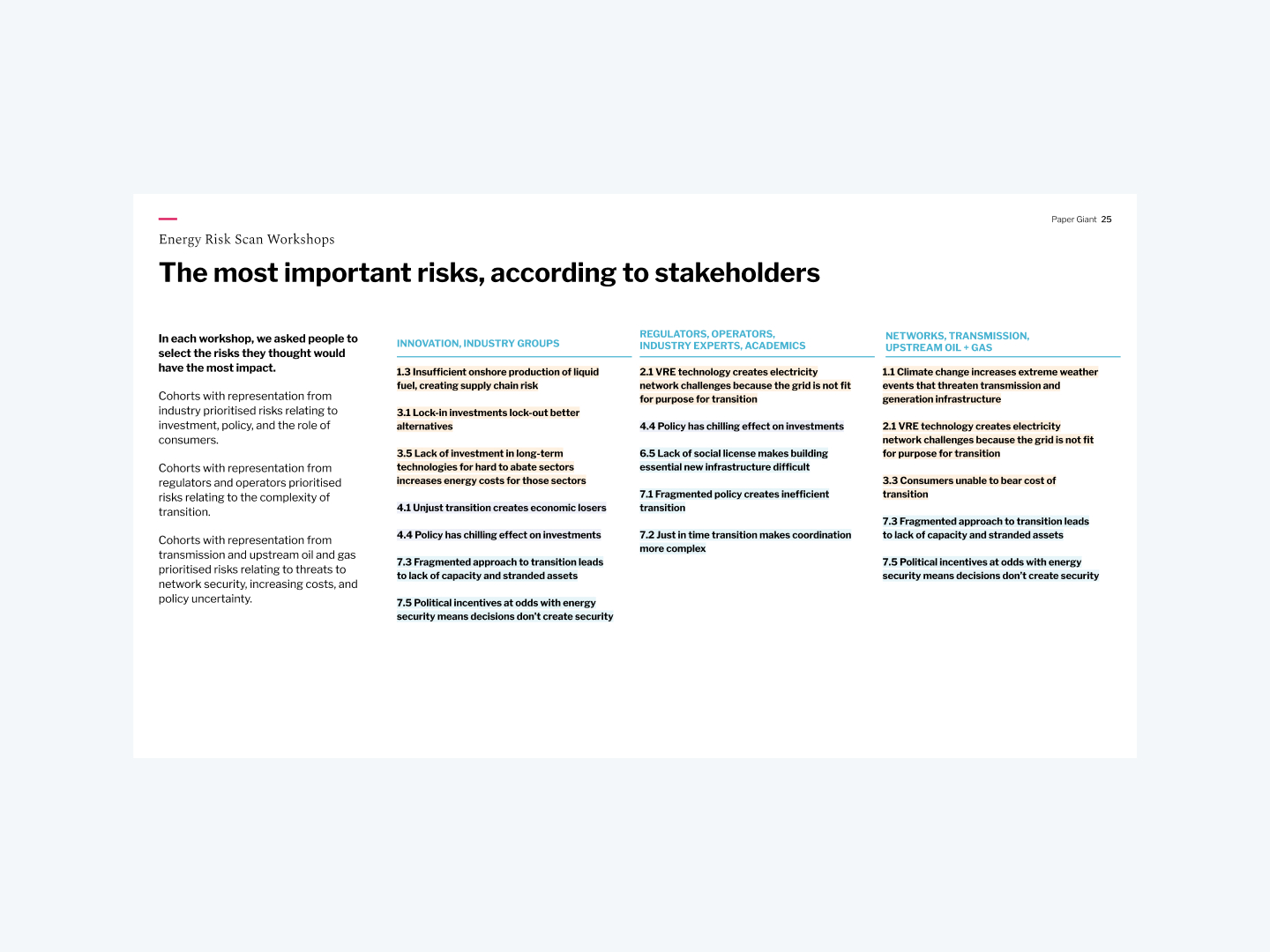

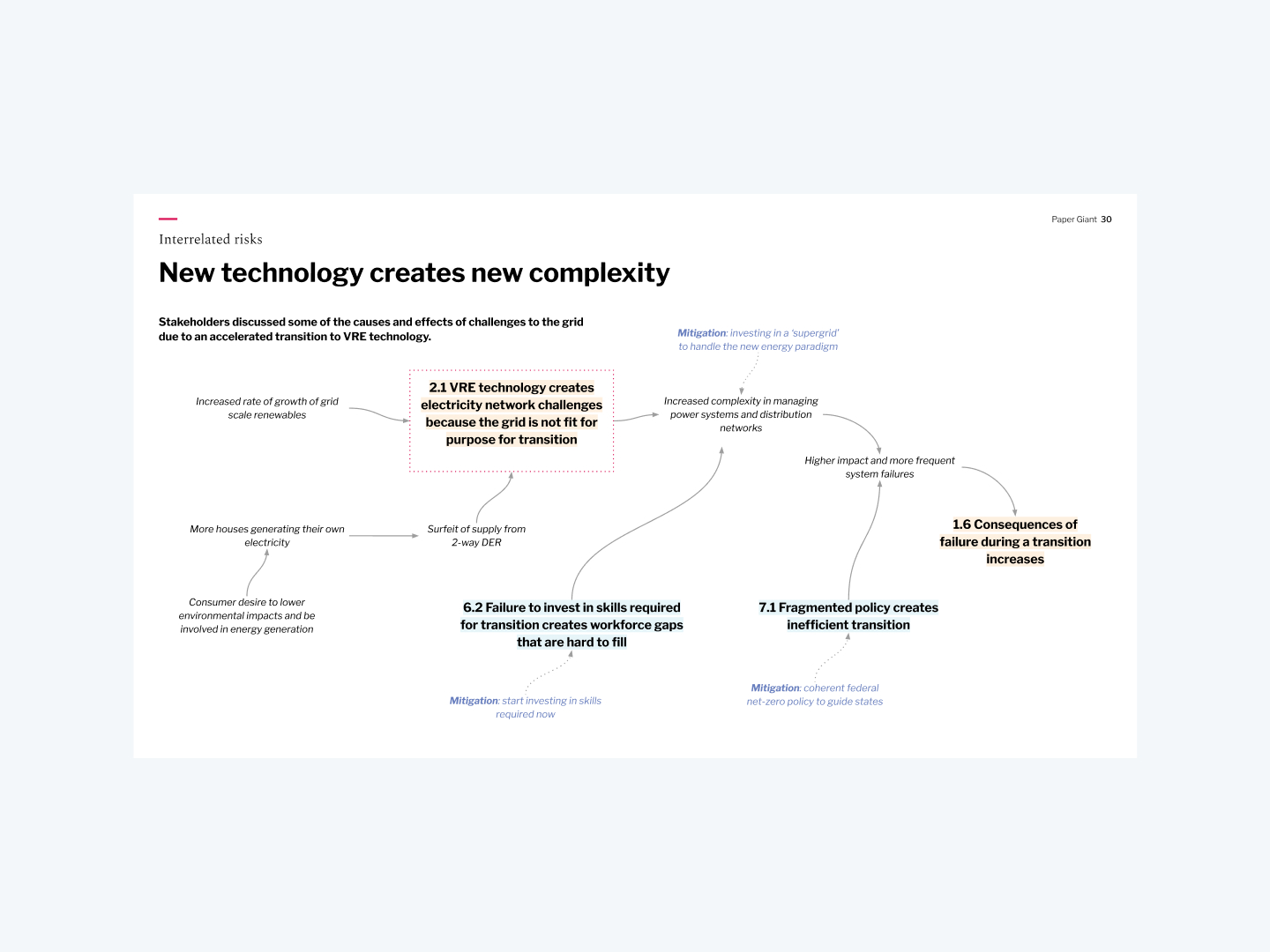
We worked to show how identified risks were connected and related to each other, so that stakeholders could easily identify priority points in the energy system for new policies, strategies and mitigations.

